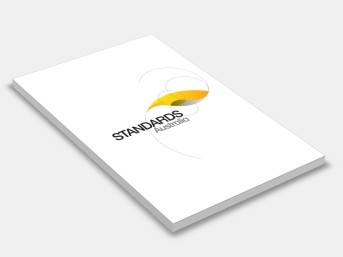AS 4586-2013 Slip resistance classification of new pedestrian surface materials
Standards Australia
Supersedes: AS/NZS 4586:2004 AMDT 1 Slip resistance classification of new pedestrian surface materials
Supersedes: AS/NZS 4586:2004 Slip resistance classification of new pedestrian surface materials
Draft Designation: DR AS 4586This Standard incorporates Amendment No. 1 (June 2017). The changes required by the Amendment are indicated in the text by a marginal bar and amendment number against the clause, note, table, figure or part thereof affected.
After consultation with stakeholders in both countries, Standards Australia and Standards New Zealand decided to develop this Standard as an Australian Standard rather than an Australian/New Zealand Standard.
The objective of this Standard is to provide users and specifiers of pedestrian surface materials (architects, engineers, ergonomists, facility managers, manufacturers and the like) with means for classifying such surfaces according to their pedestrian slip resistance for use in the selection of surfaces.
This revision incorporates an additional requirement for preparing rubber test sliders when testing smooth surfaces. Consequential changes to the nomenclature used for classifying surfaces have been included.
Appendix D will be subjected to revision in consideration of long-term availability of shoes.
This Standard provides a means of demonstrating compliance for the acceptance and rejection of new surfaces for nominated criteria.
Statements expressed in mandatory terms in notes to tables and figures are deemed to be requirements of this Standard.
The terms ‘normative’ and ‘informative’ have been used in this Standard to define the application of the appendix to which they apply. A ‘normative’ appendix is an integral part of a Standard, whereas an ‘informative’ appendix is only for information and guidance.
First published as AS/NZS 3661.1:1993. Revised and redesignated in part as AS/NZS 4586:1999. AS/NZS 4586:1999 revised and redesignated AS 4586-2013. Reissued incorporating Amendment No. 1 (June 2017).
This Standard provides means of classifying pedestrian surface materials according to their frictional characteristics when determined in accordance with the test methods set out in Appendices A, B, C, D and E. The test methods enable characteristics of surface materials to be determined in either wet or dry conditions.
This Standard does not provide for the conditioning of specimens to account for in-service wear.
NOTE: When specifying a particular slip resistance classification, specifiers should consider the likely in-service wear and its effects on slip resistance, taking into account the material type, pedestrian and other traffic and environmental conditions including cleaning, sealing and carpet wear and stretch.
Contents:
Foreword
1: Scope
2: Application
3: Normative References
4: Definitions
5: Classification Of Slip Resistance
Appendix A: Wet Pendulum Test Method
Appendix B: Dry Floor Friction Test Method
Appendix C: Wet-Barefoot Inclining Platform Test Method
Appendix D: Oil-Wet Inclining Platform Test Method
Appendix E: Displacement Volume Test Method
Appendix F: Examples Of Determining Slope Design Value (Sdv) And Slope Correction Value (SCV)
Slip Resistance of Flooring Surfaces.
BD-094
Accord Australasia; Association of Consultants in Access Australia; Australian Building Codes Board; Australian Institute for Non-Destructive Testing; Australian Institute of Architects; Australian Resilient Floorcovering Association; Australian Stone Advisory Association; Australian Tile Council; Building Service Contractors Association of Australia; Cement Concrete and Aggregates Australia; Concrete Masonry Association of Australia; CSIRO Manufacturing and Materials Technology; Engineers Australia; Housing Industry Association; Human Factors and Ergonomics Society of Australia; Insurance Council of Australia; Local Government and Shires Associations of New South Wales; Property Council of Australia; Safety Institute of Australia; Think Brick Australia.
